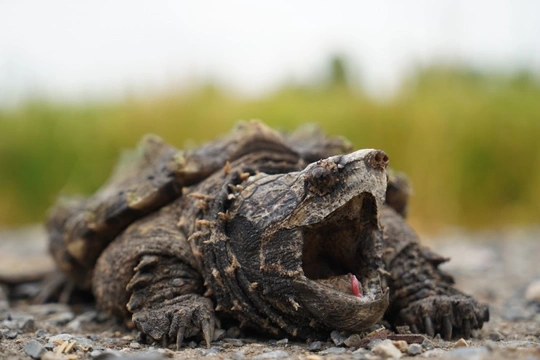
Snapping Turtles: Prehistoric Monsters in Your Aquarium
Snapping turtles are remarkable creatures, often described as living fossils that have survived alongside dinosaurs and witnessed the rise of human civilisation. With ancestors dating back over 220 million years, they represent some of the most ancient reptiles still thriving today. Turtles for sale enthusiasts treasure snapping turtles for their prehistoric charm but must be aware of their unique care requirements.
Understanding Snapping Turtles: Species and History
There are two main species popular in aquarium keeping: the Common Snapping Turtle (Chelydra serpentina) and the Alligator Snapping Turtle (Macrochelys temminckii). The Common Snapping Turtle can grow up to 50cm and may take decades to reach this size, while the Alligator Snapping Turtle can reach lengths of 65-80cm and weights up to 80kg or more in captivity, making them among the largest freshwater turtles in the world.
These turtles are omnivores with powerful jaws, consuming a diet ranging from aquatic plants to small mammals, fish, and amphibians. Due to their size and aggressive nature, they require careful handling and consideration before acquiring as pets.
Setting Up Their Aquarium: Space and Environment Needs
Snapping turtles need spacious aquatic habitats. A general rule is 20 litres of water per centimetre of shell length, so a 25cm turtle needs a minimum 500-litre tank or tub. Water depth should allow them to comfortably rest on the floor but not be too deep to prevent them raising their necks to breathe.
Robust filtration systems, such as those used in koi ponds, are essential because snapping turtles produce a lot of waste. They thrive in alkaline water, as acidic water can cause health issues like excessive shedding.
The tank should include a basking area with a heat lamp and UVB lighting, although some evidence suggests they can get vitamin D3 from diet if properly managed. Basking zones support shell and overall health.
Feeding Your Snapping Turtle Properly
As omnivores, their diet should be varied and balanced. Commercial turtle pellets provide essential nutrients, but supplementing with dead fish, earthworms, snails, and leafy aquatic plants such as duckweed and elodea will mirror their natural diet. Live feeder fish are discouraged due to disease risk.
Young snapping turtles benefit from a well-planted environment providing cover and comfort due to their nervous nature. Adult turtles are formidable predators and should be housed alone or with compatible species carefully.
Handling and Safety Precautions
Although tales of snapping turtles breaking bones are exaggerated, their bite is powerful and can cause serious injury. Always check where your turtle is before reaching into the enclosure. These turtles do not generally enjoy handling and it is best kept to a minimum.
Conservation Concerns and Ethical Ownership
Wild snapping turtles face threats from habitat destruction, road traffic, and the meat trade, especially in some parts of America where wild-caught turtles are farmed. Their slow growth and long lifespan, possibly up to a century, make population recovery slow. Responsible ownership means commitment for life and planning for long-term care or inheritance.
Considering the serious requirements and longevity, snapping turtles are only suitable for dedicated keepers experienced with aquatic reptiles. It is important to source from reputable breeders and support conservation efforts.
Conclusion
Owning a snapping turtle is like caring for a living piece of prehistoric history. Their unique needs demand commitment, spacious environments, and careful feeding. With proper respect and preparation, keepers can enjoy observing these ancient reptiles while helping conserve their future.



